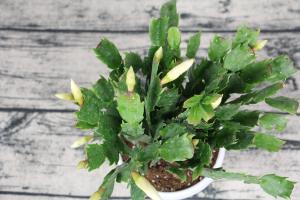Introduction
Tomatoes are a popular crop for home gardeners and commercial farmers alike. However, planting tomatoes in the same spot every year can contribute to the buildup of pests and diseases in the soil, which can stunt growth and reduce yields. This is why crop rotation is a useful technique for tomato growers.
What is Crop Rotation?
Crop rotation is the practice of changing the type of crop grown in a particular area from one planting season to the next. This helps to prevent the buildup of pests and diseases in the soil, as different crops have different nutrient requirements and attract different pests. The benefits of crop rotation include healthier soil, increased yields, and reduced need for pesticides and fertilizers.
Plants to Rotate with Tomatoes
There are several crops that are suitable for rotation with tomatoes. These include:
Legumes: Plants in the legume family, such as beans and peas, are great for nitrogen fixation, which means they take nitrogen from the air and convert it into a form that can be used by plants. This makes them ideal for planting before or after tomato crops, as tomatoes are heavy nitrogen feeders. Legumes also help to improve soil structure and fertility.
Brassicas: Plants in the brassica family, such as broccoli and cabbage, are good for planting after tomatoes, as they help to control nematodes and soil-borne diseases. Brassicas are heavy feeders, so they are not recommended for rotation before tomatoes.
Grasses: Planting grasses, such as rye and wheat, after tomatoes can help to improve soil structure and prevent erosion. Grasses are also great for suppressing weeds, which can be a problem in tomato crops.
What to Avoid
There are also several crops that should be avoided when rotating with tomatoes. These include:
Other Nightshades: Plants in the nightshade family, such as peppers and eggplants, are susceptible to the same pests and diseases as tomatoes, so it is not recommended to plant them in the same area year after year.
Cucurbits: Plants in the cucurbit family, such as cucumbers and squash, can attract the same pests as tomatoes, and can also be susceptible to some of the same diseases.
Solanaceous Weeds: Weeds in the solanaceous family, such as nightshade and jimsonweed, can carry diseases that affect tomatoes, so it is best to avoid planting tomatoes in areas where these weeds are present.
Conclusion
Crop rotation is an important practice for tomato growers, as it helps to maintain soil health and prevent the buildup of pests and diseases. By rotating tomato crops with legumes, brassicas, and grasses, and avoiding other nightshades, cucurbits, and solanaceous weeds, growers can help to ensure healthy, productive tomato crops year after year.

 how many times do yo...
how many times do yo... how many planted tre...
how many planted tre... how many pine trees ...
how many pine trees ... how many pecan trees...
how many pecan trees... how many plants comp...
how many plants comp... how many plants can ...
how many plants can ... how many plants and ...
how many plants and ... how many pepper plan...
how many pepper plan...































